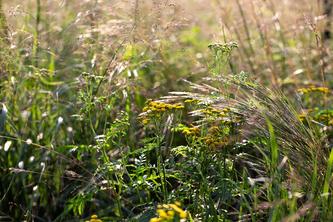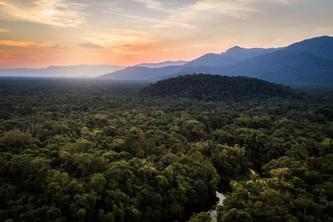
The durable, stoic elm tree has become an emblem of American landscapes. And for good reason. These charismatic trees intercept thousands of gallons of runoff each year and offer food and habitat to insects and other animals.
According to urban forestry expert Ryan Murphy, a researcher in the Department of Forest Resources at the College of Food, Agricultural and Natural Resources Sciences (CFANS), elms in urban settings also help reduce winter heating and summer cooling costs. “Their large canopies reduce wind speeds around a building,” he says. This keeps the warm air in during the winter months. In summer months, canopy shade helps reduce cooling needs.
“Elms adapt to a lot of environments because they are very resilient,” adds Benjamin Held, a researcher in CFANS’ Department of Plant Pathology. “They can withstand drought, salt, compaction, and floodplains better than most species.”
While a large elm population across Minnesota has long been welcomed by many, it has also paved the way for the pesky Dutch elm disease (DED) to spread. Decades after DED began taking its toll, land owners, arborists, and researchers have noticed some elm trees in the field resisting infection. Researchers don’t yet know all the mechanisms for what makes any elm tree—either newly identified in the field or already available on the market—resistant.
So, Held and Murphy are using funding from the Minnesota Invasive Terrestrial Pests and Plants Center (MITPPC) to bring some of those naturally resistant trees from the field to the lab to investigate what helps them stand up to DED. Then, the duo is propagating the particularly resistant trees to help spread them across Minnesota’s urban and forest landscapes.
“The MITPPC funding helps us bring to fruition work we have been doing since up to a decade ago,” says Murphy.
Encouraging resistance
Murphy and Held have been testing trees in the field to see how they respond to being inoculated with the DED pathogen. This information helps the scientists keep tabs on whether the commercially available resistant elm trees planted across the state—Valley Forge, Prairie Expedition, and Jefferson—are still holding up well to strains of the pathogen now in Minnesota.
“No one has looked at how virulent the current strain of the fungus in Minnesota is,” Held says, “and how the trees are standing up to that.” But this team has found that these three cultivars of American elm are, in fact, fending off the fungal strain quite well—they’re resisting more of it than they would encounter naturally. The researchers recommend landowners plant these three varieties as a means to help mitigate DED spread.
Testing the trees’ responses to inoculation in the field also helps Held and Murphy identify new trees that exhibit resistance and propagate them. Recently, they’ve planted a handful of these propagations back out into the landscape. Infusing Minnesota landscapes with elm trees that are resistant to infection could greatly limit DED’s spread. But the researchers aim to understand how these elm selections perform against DED (and otherwise affect an ecosystem) over time—and elm trees live to be around 100 years old.
“We really rely on land managers and the public to help us identify resistant trees,” Murphy says. So, he and Held encourage landowners who see a tree surviving nearby other elms clearly dying of the disease to report their tree to the research team through an online form.
And the biggest management tool, for both researchers, is plant diversity. “You see a picture of a boulevard with elms and it’s considered so beautiful because we love uniformity,” says Held. “But that is what made a bad situation much worse. So, it’s all about rethinking how we plant and manage in urban and forest settings.
- Categories:
- Agriculture and Environment
- Forestry
- Landscapes
- Research





